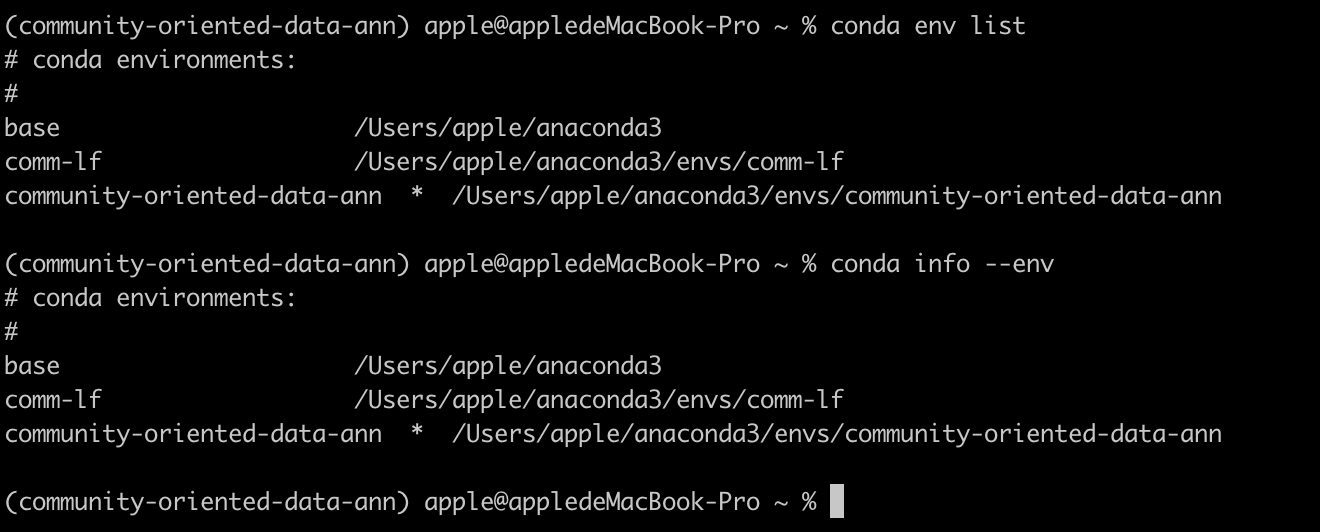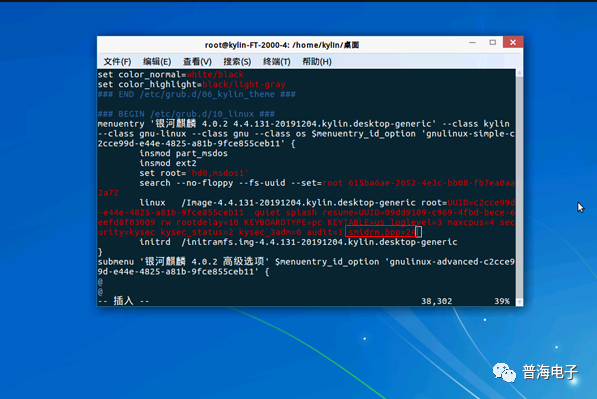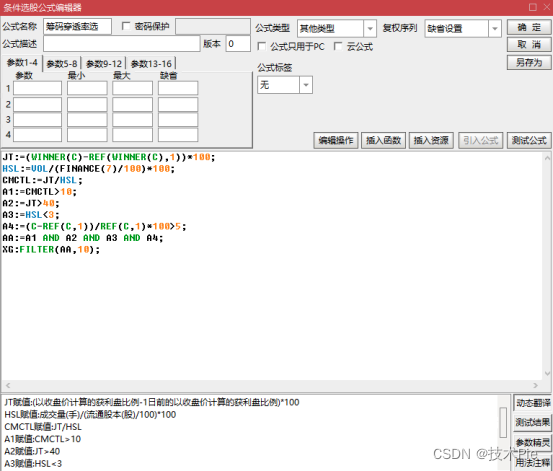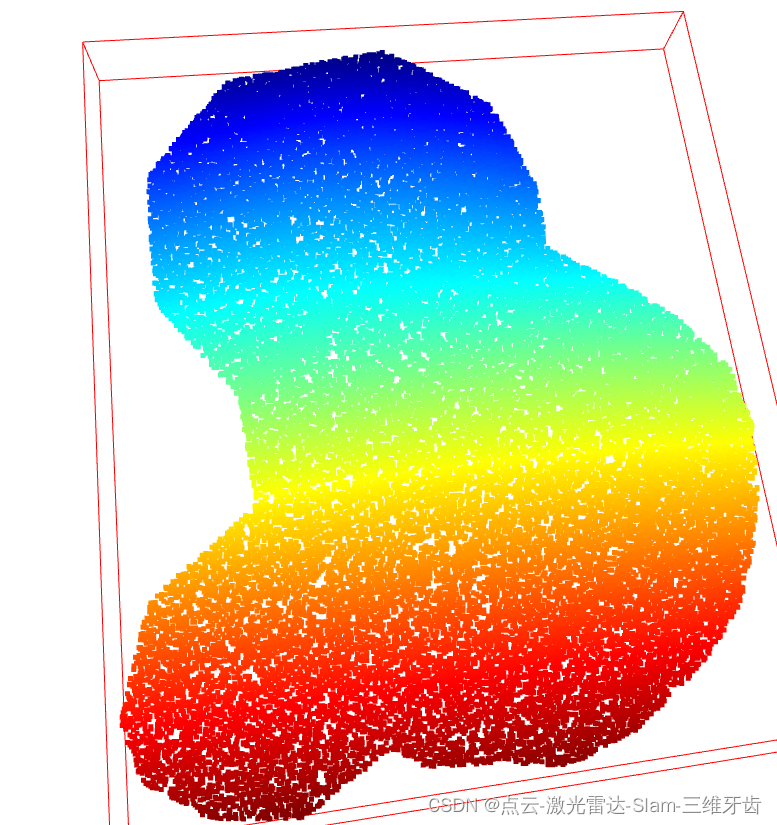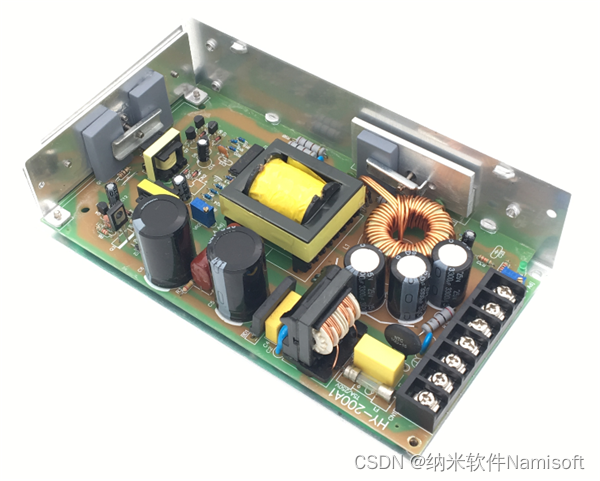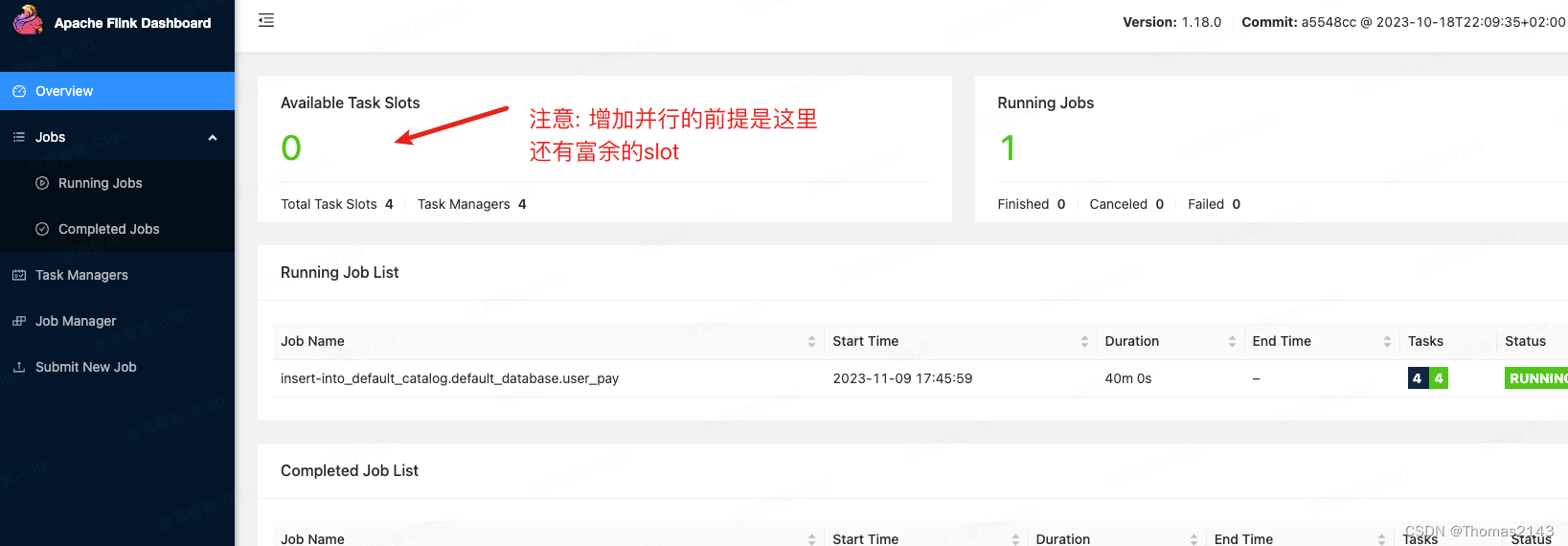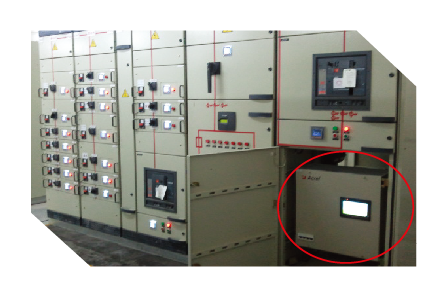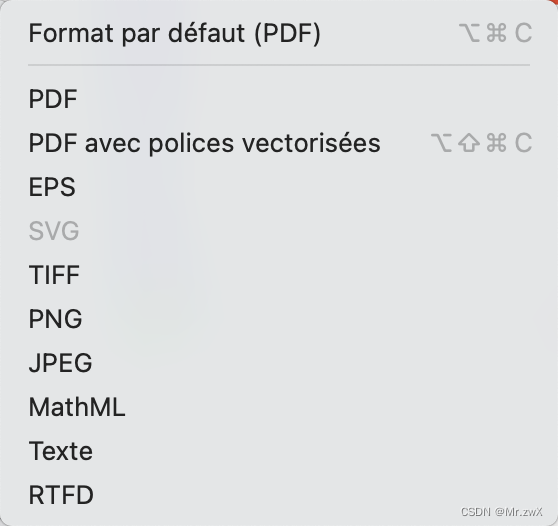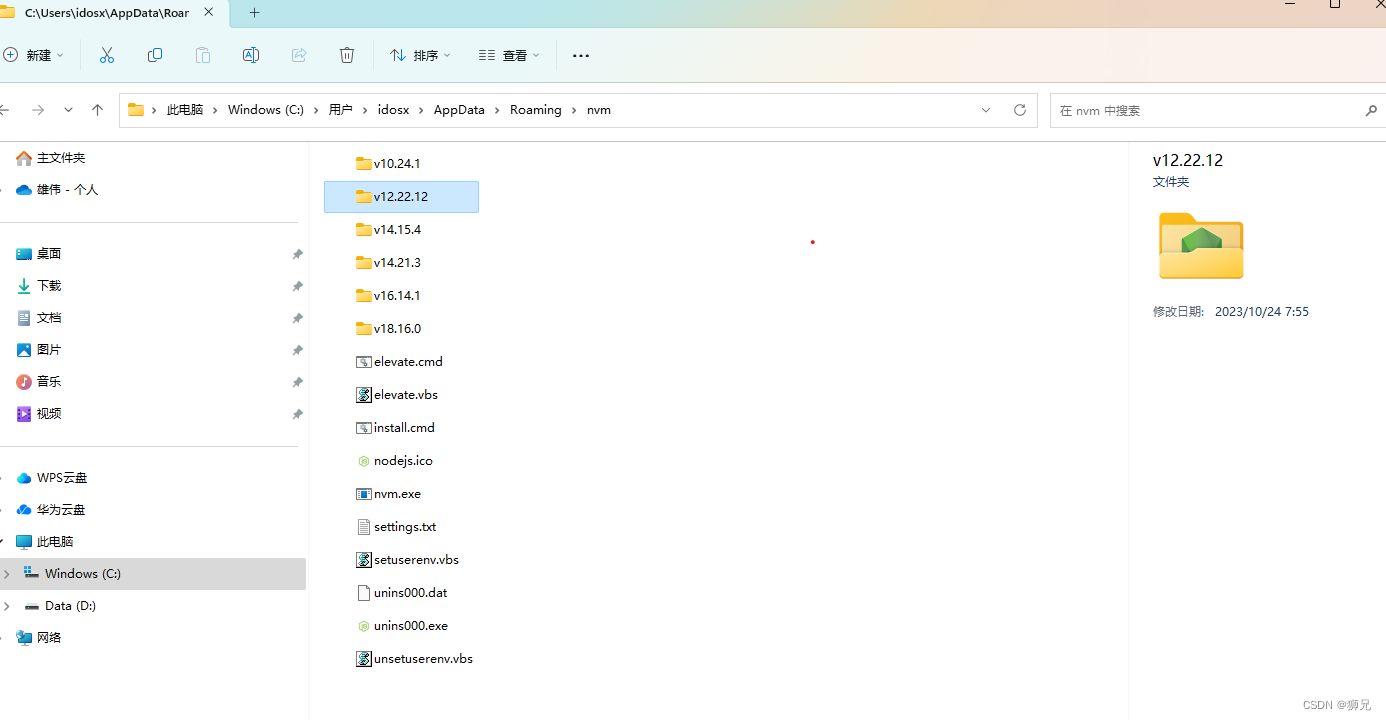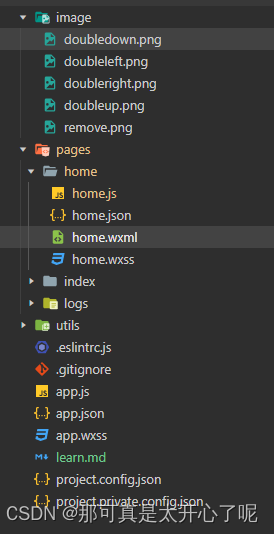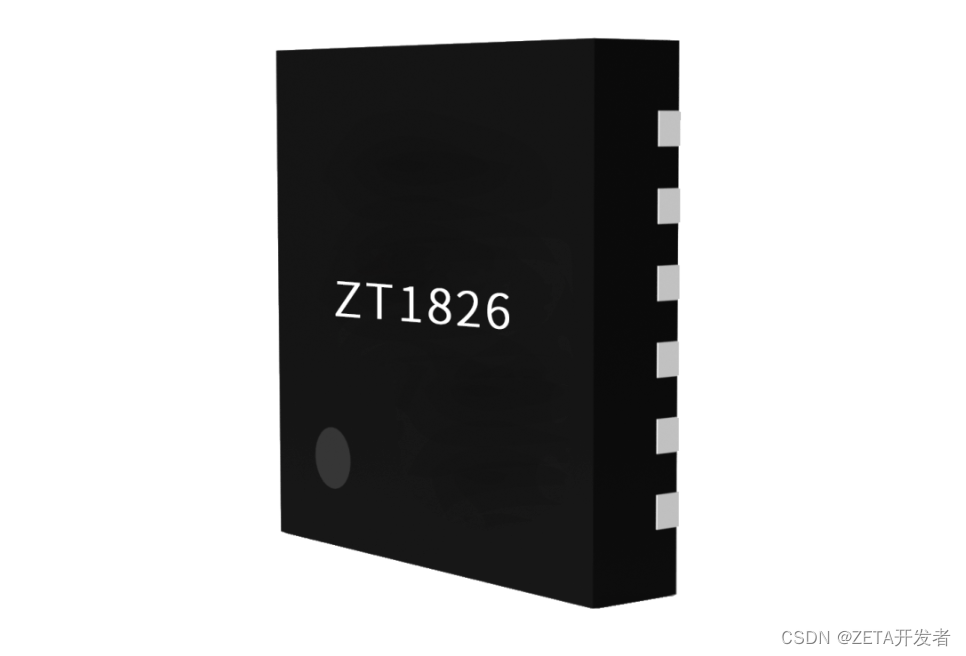ffmepeg 4.4(亲测可用)
一、使用FFMPEG库封装264视频和acc音频数据到 mp4/flv 文件中
封装流程
1.使用avformat_open_input分别打开视频和音频文件,初始化其AVFormatContext,使用avformat_find_stream_info获取编码器基本信息
2.使用avformat_alloc_output_context2初始化输出的AVFormatContext结构
3.使用函数avformat_new_stream给输出的AVFormatContext结构创建音频和视频流,使用avcodec_parameters_copy方法将音视频的编码参数拷贝到新创建的对应的流的codecpar结构中
4.使用avio_open打开输出文件,初始化输出AVFormatContext结构中的IO上下文结构
5.使用avformat_write_header写入流的头信息到输出文件中
6.根据时间戳同步原则交错写入音视频数据,并对时间戳信息进行设置和校准
7.写入流预告信息到输出文件中(moov)
8.释放空间,关闭文件
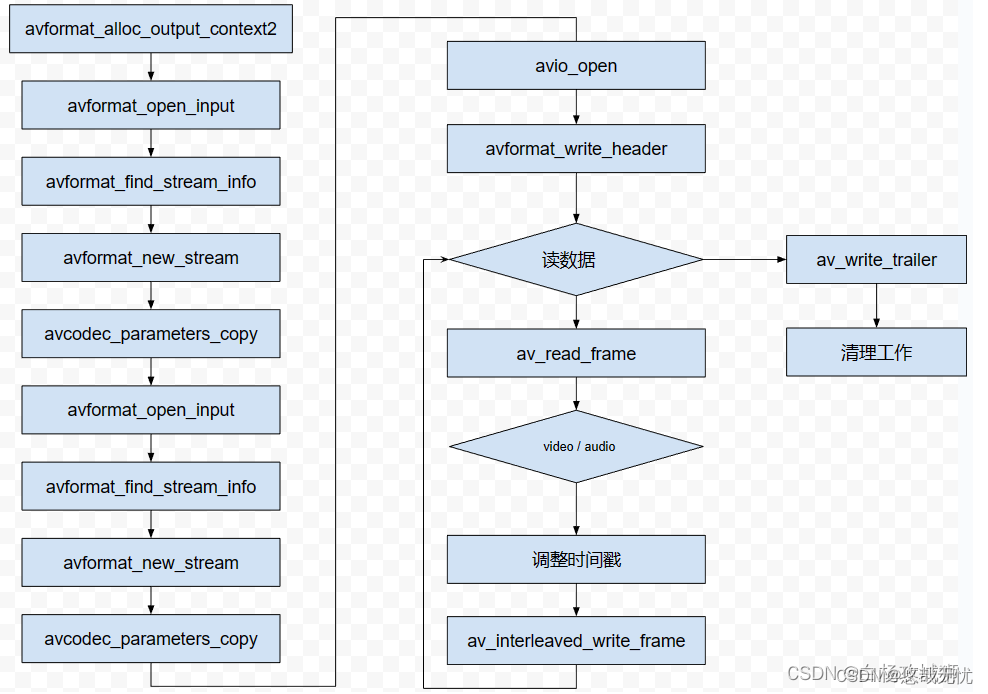
【mp4_muxer.cpp】
#include <stdio.h>
#define __STDC_CONSTANT_MACROS
#ifdef _WIN32
//Windows
extern "C"
{
#include "libavformat/avformat.h"
};
#else
//Linux...
#ifdef __cplusplus
extern "C"
{
#endif
#include <libavformat/avformat.h>
#ifdef __cplusplus
};
#endif
#endif
int main(int argc, char* argv[]) {
const AVOutputFormat* ofmt = NULL;
//Input AVFormatContext and Output AVFormatContext
AVFormatContext* ifmt_ctx_v = NULL, * ifmt_ctx_a = NULL, * ofmt_ctx = NULL;
AVPacket pkt;
int ret;
unsigned int i;
int videoindex_v = -1, videoindex_out = -1;
int audioindex_a = -1, audioindex_out = -1;
int frame_index = 0;
int64_t cur_pts_v = 0, cur_pts_a = 0;
int writing_v = 1, writing_a = 1;
const char* in_filename_v = "test.h264";
const char* in_filename_a = "audio_chn0.aac";
const char* out_filename = "test.mp4";//Output file URL
if ((ret = avformat_open_input(&ifmt_ctx_v, in_filename_v, 0, 0)) < 0) {
printf("Could not open input file.");
goto end;
}
if ((ret = avformat_find_stream_info(ifmt_ctx_v, 0)) < 0) {
printf("Failed to retrieve input stream information");
goto end;
}
if ((ret = avformat_open_input(&ifmt_ctx_a, in_filename_a, 0, 0)) < 0) {
printf("Could not open input file.");
goto end;
}
if ((ret = avformat_find_stream_info(ifmt_ctx_a, 0)) < 0) {
printf("Failed to retrieve input stream information");
goto end;
}
//Output
avformat_alloc_output_context2(&ofmt_ctx, NULL, NULL, out_filename);
if (!ofmt_ctx) {
printf("Could not create output context\n");
ret = AVERROR_UNKNOWN;
goto end;
}
ofmt = ofmt_ctx->oformat;
for (i = 0; i < ifmt_ctx_v->nb_streams; i++) {
//Create output AVStream according to input AVStream
if (ifmt_ctx_v->streams[i]->codecpar->codec_type == AVMEDIA_TYPE_VIDEO) {
AVStream* out_stream = avformat_new_stream(ofmt_ctx, nullptr);
videoindex_v = i;
if (!out_stream) {
printf("Failed allocating output stream\n");
ret = AVERROR_UNKNOWN;
goto end;
}
videoindex_out = out_stream->index;
//Copy the settings of AVCodecContext
if (avcodec_parameters_copy(out_stream->codecpar, ifmt_ctx_v->streams[i]->codecpar) < 0) {
printf("Failed to copy context from input to output stream codec context\n");
goto end;
}
break;
}
}
for (i = 0; i < ifmt_ctx_a->nb_streams; i++) {
//Create output AVStream according to input AVStream
if (ifmt_ctx_a->streams[i]->codecpar->codec_type == AVMEDIA_TYPE_AUDIO) {
AVStream* out_stream = avformat_new_stream(ofmt_ctx, nullptr);
audioindex_a = i;
if (!out_stream) {
printf("Failed allocating output stream\n");
ret = AVERROR_UNKNOWN;
goto end;
}
audioindex_out = out_stream->index;
//Copy the settings of AVCodecContext
if (avcodec_parameters_copy(out_stream->codecpar, ifmt_ctx_a->streams[i]->codecpar) < 0) {
printf("Failed to copy context from input to output stream codec context\n");
goto end;
}
out_stream->codecpar->codec_tag = 0;
if (ofmt_ctx->oformat->flags & AVFMT_GLOBALHEADER)
ofmt_ctx->flags |= AV_CODEC_FLAG_GLOBAL_HEADER;
break;
}
}
/* open the output file, if needed */
if (!(ofmt->flags & AVFMT_NOFILE)) {
if (avio_open(&ofmt_ctx->pb, out_filename, AVIO_FLAG_WRITE)) {
fprintf(stderr, "Could not open '%s': %d\n", out_filename,
ret);
goto end;
}
}
//Write file header
if (avformat_write_header(ofmt_ctx, NULL) < 0) {
fprintf(stderr, "Error occurred when opening output file: %d\n",
ret);
goto end;
}
//写入数据
while (writing_v || writing_a)
{
AVFormatContext* ifmt_ctx;
int stream_index = 0;
AVStream* in_stream, * out_stream;
int av_type = 0;
if (writing_v &&
(!writing_a || av_compare_ts(cur_pts_v, ifmt_ctx_v->streams[videoindex_v]->time_base,
cur_pts_a, ifmt_ctx_a->streams[audioindex_a]->time_base) <= 0))
{
av_type = 0;
ifmt_ctx = ifmt_ctx_v;
stream_index = videoindex_out;
if (av_read_frame(ifmt_ctx, &pkt) >= 0)
{
do {
in_stream = ifmt_ctx->streams[pkt.stream_index];
out_stream = ofmt_ctx->streams[stream_index];
if (pkt.stream_index == videoindex_v)
{
//FIX:No PTS (Example: Raw H.264)
//Simple Write PTS
if (pkt.pts == AV_NOPTS_VALUE)
{
//Write PTS
AVRational time_base1 = in_stream->time_base;
//Duration between 2 frames (us)
int64_t calc_duration = (double)AV_TIME_BASE / av_q2d(in_stream->r_frame_rate);
//Parameters
pkt.pts = (double)(frame_index * calc_duration) / (double)(av_q2d(time_base1) * AV_TIME_BASE);
pkt.dts = pkt.pts;
pkt.duration = (double)calc_duration / (double)(av_q2d(time_base1) * AV_TIME_BASE);
frame_index++;
printf("frame_index: %d\n", frame_index);
}
cur_pts_v = pkt.pts;
break;
}
} while
(av_read_frame(ifmt_ctx, &pkt) >= 0);
}
else
{
writing_v = 0;
continue;
}
}
else
{
av_type = 1;
ifmt_ctx = ifmt_ctx_a;
stream_index = audioindex_out;
if (av_read_frame(ifmt_ctx, &pkt) >= 0)
{
do {
in_stream = ifmt_ctx->streams[pkt.stream_index];
out_stream = ofmt_ctx->streams[stream_index];
if (pkt.stream_index == audioindex_a)
{
//FIX:No PTS
//Simple Write PTS
if (pkt.pts == AV_NOPTS_VALUE)
{
//Write PTS
AVRational time_base1 = in_stream->time_base;
//Duration between 2 frames (us)
int64_t calc_duration = (double)AV_TIME_BASE / av_q2d(in_stream->r_frame_rate);
//Parameters
pkt.pts = (double)(frame_index * calc_duration) /
(double)(av_q2d(time_base1) * AV_TIME_BASE);
pkt.dts = pkt.pts;
pkt.duration = (double)calc_duration / (double)(av_q2d(time_base1) * AV_TIME_BASE);
frame_index++;
}
cur_pts_a = pkt.pts;
break;
}
} while (av_read_frame(ifmt_ctx, &pkt) >= 0);
}
else
{
writing_a = 0;
continue;
}
}
//Convert PTS/DTS
pkt.pts = av_rescale_q_rnd(pkt.pts, in_stream->time_base, out_stream->time_base,
(AVRounding)(AV_ROUND_NEAR_INF | AV_ROUND_PASS_MINMAX));
pkt.dts = av_rescale_q_rnd(pkt.dts, in_stream->time_base, out_stream->time_base,
(AVRounding)(AV_ROUND_NEAR_INF | AV_ROUND_PASS_MINMAX));
pkt.duration = av_rescale_q(pkt.duration, in_stream->time_base, out_stream->time_base);
pkt.pos = -1;
pkt.stream_index = stream_index;
printf("Write 1 Packet. type:%d, size:%d\tpts:%ld\n", av_type, pkt.size, pkt.pts);
//Write
if (av_interleaved_write_frame(ofmt_ctx, &pkt) < 0) {
printf("Error muxing packet\n");
break;
}
av_packet_unref(&pkt);
}
printf("Write file trailer.\n");
//Write file trailer
av_write_trailer(ofmt_ctx);
end:
avformat_close_input(&ifmt_ctx_v);
avformat_close_input(&ifmt_ctx_a);
/* close output */
if (ofmt_ctx && !(ofmt->flags & AVFMT_NOFILE))
avio_close(ofmt_ctx->pb);
avformat_free_context(ofmt_ctx);
if (ret < 0 && ret != AVERROR_EOF) {
printf("Error occurred.\n");
return -1;
}
return 0;
}
【Makefile】
CROSS_COMPILE = aarch64-himix200-linux-
CC = $(CROSS_COMPILE)g++
AR = $(CROSS_COMPILE)ar
STRIP = $(CROSS_COMPILE)strip
CFLAGS = -Wall -O2 -I../../source/mp4Lib/include
LIBS += -L../../source/mp4Lib/lib -lpthread
LIBS += -lavformat -lavcodec -lavdevice -lavutil -lavfilter -lswscale -lswresample -lz
SRCS = $(wildcard *.cpp)
OBJS = $(SRCS:%.cpp=%.o)
DEPS = $(SRCS:%.cpp=%.d)
TARGET = mp4muxer
all:$(TARGET)
-include $(DEPS)
%.o:%.cpp
$(CC) $(CFLAGS) -c -o $@ $<
%.d:%.c
@set -e; rm -f $@; \
$(CC) -MM $(CFLAGS) $< > $@.$$$$; \
sed 's,\($*\)\.o[ :]*,\1.o $@ : ,g' < $@.$$$$ > $@; \
rm -f $@.$$$$
$(TARGET):$(OBJS)
$(CC) -o $@ $^ $(LIBS)
$(STRIP) $@
.PHONY:clean
clean:
rm -fr $(TARGET) $(OBJS) $(DEPS)
二、使用FFMPEG分离mp4/flv文件中的264视频和aac音频
分离流程
1.使用avformat_open_input 函数打开文件并初始化结构AVFormatContext
2.查找是否存在音频和视频信息
3.构建一个h264_mp4toannexb比特流的过滤器,用来给视频avpaket包添加头信息
4.打开2个输出文件(音频, 视频)
5.循环读取视频文件,并将音视频分别写入文件
注意:音频需要手动添加头信息,没有提供aac的adts自动添加的过滤器

【mp4_demuxer.cpp】
#include <stdio.h>
extern "C"
{
#include <libavformat/avformat.h>
}
/* 打印编码器支持该采样率并查找指定采样率下标 */
static int find_sample_rate_index(const AVCodec* codec, int sample_rate)
{
const int* p = codec->supported_samplerates;
int sample_rate_index = -1; //支持的分辨率下标
int count = 0;
while (*p != 0) {// 0作为退出条件,比如libfdk-aacenc.c的aac_sample_rates
printf("%s 支持采样率: %dhz 对应下标:%d\n", codec->name, *p, count);
if (*p == sample_rate)
sample_rate_index = count;
p++;
count++;
}
return sample_rate_index;
}
/// <summary>
/// 给aac音频数据添加adts头
/// </summary>
/// <param name="header">adts数组</param>
/// <param name="sample_rate">采样率</param>
/// <param name="channals">通道数</param>
/// <param name="prfile">音频编码器配置文件(FF_PROFILE_AAC_LOW 定义在 avcodec.h)</param>
/// <param name="len">音频包长度</param>
void addHeader(char header[], int sample_rate, int channals, int prfile, int len)
{
uint8_t sampleIndex = 0;
switch (sample_rate) {
case 96000: sampleIndex = 0; break;
case 88200: sampleIndex = 1; break;
case 64000: sampleIndex = 2; break;
case 48000: sampleIndex = 3; break;
case 44100: sampleIndex = 4; break;
case 32000: sampleIndex = 5; break;
case 24000: sampleIndex = 6; break;
case 22050: sampleIndex = 7; break;
case 16000: sampleIndex = 8; break;
case 12000: sampleIndex = 9; break;
case 11025: sampleIndex = 10; break;
case 8000: sampleIndex = 11; break;
case 7350: sampleIndex = 12; break;
default: sampleIndex = 4; break;
}
uint8_t audioType = 2; //AAC LC
uint8_t channelConfig = 2; //双通道
len += 7;
//0,1是固定的
header[0] = (uint8_t)0xff; //syncword:0xfff 高8bits
header[1] = (uint8_t)0xf0; //syncword:0xfff 低4bits
header[1] |= (0 << 3); //MPEG Version:0 for MPEG-4,1 for MPEG-2 1bit
header[1] |= (0 << 1); //Layer:0 2bits
header[1] |= 1; //protection absent:1 1bit
//根据aac类型,采样率,通道数来配置
header[2] = (audioType - 1) << 6; //profile:audio_object_type - 1 2bits
header[2] |= (sampleIndex & 0x0f) << 2; //sampling frequency index:sampling_frequency_index 4bits
header[2] |= (0 << 1); //private bit:0 1bit
header[2] |= (channelConfig & 0x04) >> 2; //channel configuration:channel_config 高1bit
//根据通道数+数据长度来配置
header[3] = (channelConfig & 0x03) << 6; //channel configuration:channel_config 低2bits
header[3] |= (0 << 5); //original:0 1bit
header[3] |= (0 << 4); //home:0 1bit
header[3] |= (0 << 3); //copyright id bit:0 1bit
header[3] |= (0 << 2); //copyright id start:0 1bit
header[3] |= ((len & 0x1800) >> 11); //frame length:value 高2bits
//根据数据长度来配置
header[4] = (uint8_t)((len & 0x7f8) >> 3); //frame length:value 中间8bits
header[5] = (uint8_t)((len & 0x7) << 5); //frame length:value 低3bits
header[5] |= (uint8_t)0x1f; //buffer fullness:0x7ff 高5bits
header[6] = (uint8_t)0xfc;
}
int main() {
AVFormatContext* ifmt_ctx = NULL;
AVPacket pkt;
int ret;
unsigned int i;
int videoindex = -1, audioindex = -1;
const char* in_filename = "test.mp4";
const char* out_filename_v = "test1.h264";
const char* out_filename_a = "test1.aac";
if ((ret = avformat_open_input(&ifmt_ctx, in_filename, 0, 0)) < 0) {
printf("Could not open input file.");
return -1;
}
if ((ret = avformat_find_stream_info(ifmt_ctx, 0)) < 0) {
printf("Failed to retrieve input stream information");
return -1;
}
videoindex = -1;
for (i = 0; i < ifmt_ctx->nb_streams; i++) { //nb_streams:视音频流的个数
if (ifmt_ctx->streams[i]->codecpar->codec_type == AVMEDIA_TYPE_VIDEO)
videoindex = i;
else if (ifmt_ctx->streams[i]->codecpar->codec_type == AVMEDIA_TYPE_AUDIO)
audioindex = i;
}
printf("\nInput Video===========================\n");
av_dump_format(ifmt_ctx, 0, in_filename, 0); // 打印信息
printf("\n======================================\n");
FILE* fp_audio = fopen(out_filename_a, "wb+");
FILE* fp_video = fopen(out_filename_v, "wb+");
AVBSFContext* bsf_ctx = NULL;
const AVBitStreamFilter* pfilter = av_bsf_get_by_name("h264_mp4toannexb");
if (pfilter == NULL) {
printf("Get bsf failed!\n");
}
if ((ret = av_bsf_alloc(pfilter, &bsf_ctx)) != 0) {
printf("Alloc bsf failed!\n");
}
ret = avcodec_parameters_copy(bsf_ctx->par_in, ifmt_ctx->streams[videoindex]->codecpar);
if (ret < 0) {
printf("Set Codec failed!\n");
}
ret = av_bsf_init(bsf_ctx);
if (ret < 0) {
printf("Init bsf failed!\n");
}
//这里遍历音频编码器打印支持的采样率,并找到当前音频采样率所在的下表,用于后面添加adts头
//本程序并没有使用,只是测试,如果为了程序健壮性可以采用此方式
const AVCodec* codec = nullptr;
codec = avcodec_find_encoder(ifmt_ctx->streams[audioindex]->codecpar->codec_id);
int sample_rate_index = find_sample_rate_index(codec, ifmt_ctx->streams[audioindex]->codecpar->sample_rate);
printf("分辨率数组下表:%d\n", sample_rate_index);
while (av_read_frame(ifmt_ctx, &pkt) >= 0) {
if (pkt.stream_index == videoindex) {
av_bsf_send_packet(bsf_ctx, &pkt);
while (true)
{
ret = av_bsf_receive_packet(bsf_ctx, &pkt);
if (ret == AVERROR(EAGAIN) || ret == AVERROR_EOF)
break;
else if (ret < 0) {
printf("Receive Pkt failed!\n");
break;
}
printf("Write Video Packet. size:%d\tpts:%ld\n", pkt.size, pkt.pts);
fwrite(pkt.data, 1, pkt.size, fp_video);
}
}
else if (pkt.stream_index == audioindex) {
printf("Write Audio Packet. size:%d\tpts:%ld\n", pkt.size, pkt.pts);
char adts[7] = { 0 };
addHeader(adts, ifmt_ctx->streams[audioindex]->codecpar->sample_rate,
ifmt_ctx->streams[audioindex]->codecpar->channels,
ifmt_ctx->streams[audioindex]->codecpar->profile,
pkt.size);
fwrite(adts, 1, 7, fp_audio);
fwrite(pkt.data, 1, pkt.size, fp_audio);
}
av_packet_unref(&pkt);
}
av_bsf_free(&bsf_ctx);
fclose(fp_video);
fclose(fp_audio);
avformat_close_input(&ifmt_ctx);
return 0;
if (ifmt_ctx)
avformat_close_input(&ifmt_ctx);
if (fp_audio)
fclose(fp_audio);
if (fp_video)
fclose(fp_video);
if (bsf_ctx)
av_bsf_free(&bsf_ctx);
return -1;
}
【Makefile】
CROSS_COMPILE = aarch64-himix200-linux-
CC = $(CROSS_COMPILE)g++
AR = $(CROSS_COMPILE)ar
STRIP = $(CROSS_COMPILE)strip
CFLAGS = -Wall -O2 -I../../source/mp4Lib/include
LIBS += -L../../source/mp4Lib/lib -lpthread
LIBS += -lavformat -lavcodec -lavdevice -lavutil -lavfilter -lswscale -lswresample -lz
SRCS = $(wildcard *.cpp)
OBJS = $(SRCS:%.cpp=%.o)
DEPS = $(SRCS:%.cpp=%.d)
TARGET = mp4demuxer
all:$(TARGET)
-include $(DEPS)
%.o:%.cpp
$(CC) $(CFLAGS) -c -o $@ $<
%.d:%.c
@set -e; rm -f $@; \
$(CC) -MM $(CFLAGS) $< > $@.$$$$; \
sed 's,\($*\)\.o[ :]*,\1.o $@ : ,g' < $@.$$$$ > $@; \
rm -f $@.$$$$
$(TARGET):$(OBJS)
$(CC) -o $@ $^ $(LIBS)
$(STRIP) $@
.PHONY:clean
clean:
rm -fr $(TARGET) $(OBJS) $(DEPS)

